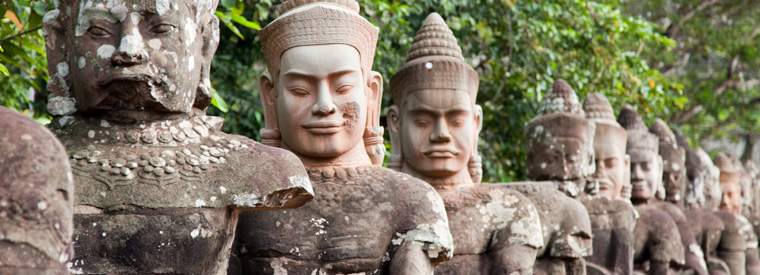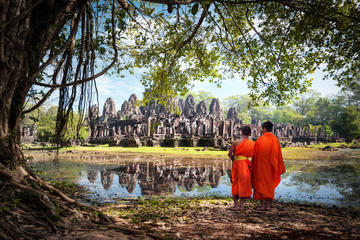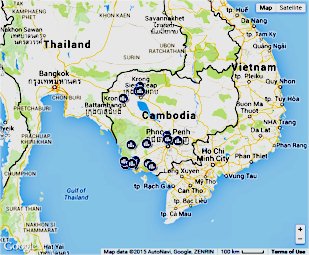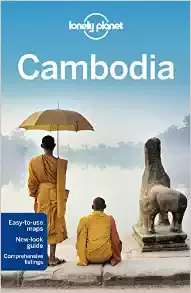« Home • Asia & Pacific • CAMBODIA • Destination Cambodia
Discover magical Cambodia

Various factors contribute to Cambodian culture including Theravada Buddhism, French Colonialism, Hinduism, Angkor era culture, and modern globalization. The Cambodian Ministry of Culture and Fine Arts is responsible for promoting and developing Cambodian culture.
A | B | C | D | E | F | G | H | I | J | K | L | M | N | O | P | Q | R | S | T | U | V | W | X | Y | Z
» Angkor Centre for Conservation of Biodiversity
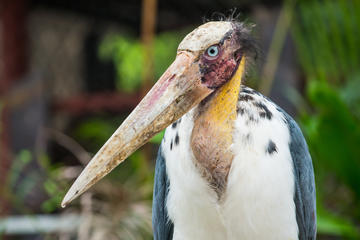
Recognized as the first nature preservation in Cambodia, Angkor Center for Conservation of Biodiversity is known for its wildlife rescue, animal rehabilitation and endangered species breeding. Visitors to ACCB can tour the grounds under the direction of expert guides who are well informed about the unique challenges facing the protection of Cambodia's wildlife. From the pileated gibbons to silvered langur, ACCB is home to animals found in few other places on earth …
» Angkor Thom
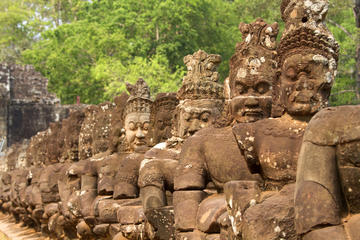
The last capital of the Khmers is a stupendous complex on a stupefying scale; established in the 12th century on the site of an earlier capital, Angkor Thom dwarfs even nearby Angkor Wat. The city's 7.5 miles (12 kilometers) of wall is ringed by a moat (which no longer holds water or - thankfully - crocodiles). Each of the five enormous gates is a monument in itself, approached by avenues lined with 108 divinities (good on the left, evil on the right) …
» Angkor Wat
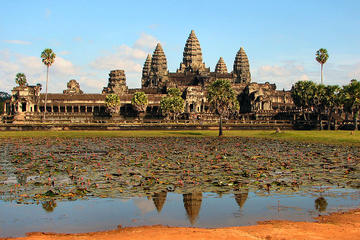
For many people, Angkor Wat alone justifies a trip to Southeast Asia. Like many sites in the Angkor Archeological Park, this breathtaking temple dates to the 12th century, with its unique west-facing orientation indicating that it was intended as a mausoleum for its creator, Suryavarman II. Angkor Wat's colossal size reflects its ambition: this was intended as no less than a microcosm of the universe. Nonetheless it's difficult to get lost here …
» Bakong
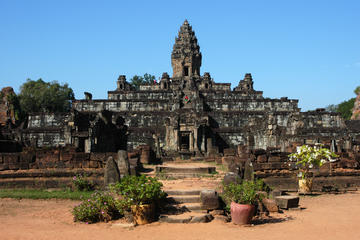
One of the earliest temples in the region, Bakong was built in tiers within a strict geometric matrix, a style recognizable in the later Angkor Wat. Though significantly smaller than that complex, Bakong has a charm all its own. The central temple rises on 5 tiers and was dedicated to the Hindu god Shiva. It dates to 881 AD, though the tower which forms its focal point was added much later …
» Banteay Kdei
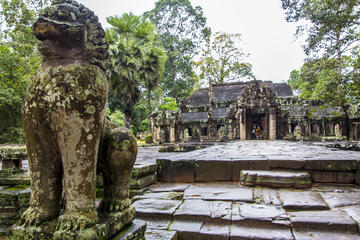
The unrestored ruins of Banteay Kdei, a Buddhist monastery complex, date back to 1181. This was one of the first structures built by the prolific King Jayavarman VII, and it features four gates, each adorned with a carved face of the king, much like at Bayon. One of the first things you'll notice upon visiting Banteay Kdei is the way its walls and structures lean precariously, some held up by ropes and cables. Banteay Kdei was made from softer gray sandstone that has eroded over time …
» Banteay Srei
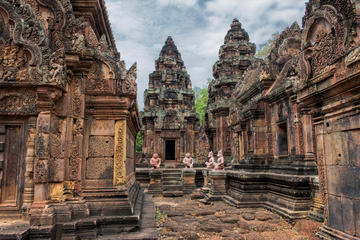
Located 24 miles (38 km) northeast of Siem Reap, the Hindu temple of Banteay Srei lies off the beaten tourist path in Angkor but is a must-see for temple buffs. While small by Angkor standards, the 10-century red sandstone structure is famous for its intricate and well-preserved decorative carvings. French archaeologists who uncovered it during the early 20th century called it 'a jewel in Khmer art.' …
» Baphoun
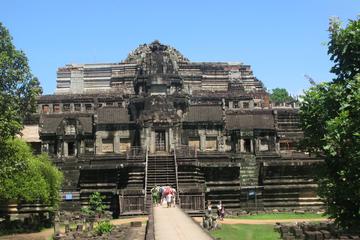
Baphuon began life in the 11th century as a Hindu temple meant to represent mystical Mount Meru, like most temples in the region. It was later rededicated to Buddha but hasn't weathered the intervening years as well as its neighbors, with much of the construction lying in countless pieces. A vast reclining Buddha forms a wall of one of the temple's three tiers, but you will have to exercise your imagination to visualize the divinity's features …
» Bayon Temple
The Bayon temple forms a square at the center of the much larger square of the vast Angkor Thom, and is the architectural highlight of the complex. This was considered by the Khmers to be the conjunction of heaven and earth, though the auspicious site was covered in jungle for centuries. Like much in the area it dates to the 12th-century reign of King Jayavarman VII, and is particularly noted for its magnificent carved stone faces with their beatific smiles …
» Cambodia-Vietnam Friendship Monument
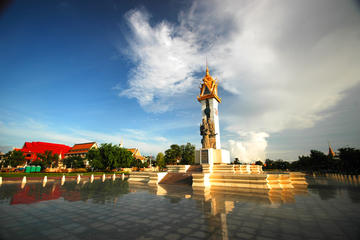
Built in the late 1970s, the Cambodia-Vietnam Friendship Monument is a statue located in a large reflecting pool that stands in honor of the former alliance between Cambodia and Vietnam. Located at the Botum Park near the center of Phnom Penh, not far from the Royal Palace, the monument is an interesting piece of history as it was built by the Communist regime that took power after the Cambodian-Vietnamese War and overthrew the leadership of the Khmer Rouge …
» Central Market (Pshar Thom Thmey)
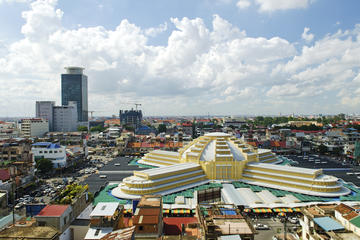
This giant yellow dome first opened in 1937, and today, more than 70 years later, the Central Market is remains a destination for first-time visitors to Cambodia's capital city. Here, travelers can wander through hundreds of stalls selling bargain goods, antique coins, clothing, clocks, fabric, shoes, food and traditional souvenirs. A popular spot, heavy rains can flood the grounds, so it's a better bet in drier seasons …
» Independence Monument
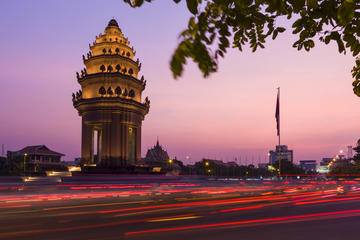
A 60-foot (20-meter) tall Angkor-style monument built in 1958, the Independence Monument was constructed to commemorate the Cambodians winning back their independence from the French in 1953. Renowned Cambodian architect Vann Molyvann designed the monument; the architecture is patterned after a lotus flower and adorned with five levels of Naga heads, which gives it a very distinctive look. Located in the heart of busy Phnom Penh …
» Kandal Market (Phsar Kandal)
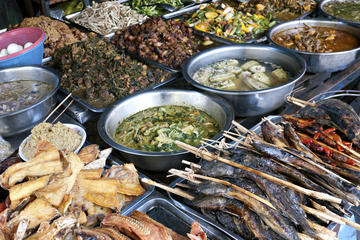
Kandal Market, or Phsar Kandal in Khmer, is the 'market in the middle,' or 'central market' (not to be confused with the other, major Central Market in Phnom Penh). Though Kandal Market does sell goods such as clothes, shoes, bags and jewelry, it's primarily known as the food market for locals. There's no better way to get a real sense of place than by visiting a local market; take a trip to Kandal and immerse yourself in the colors, textures, smells and tastes of Cambodia …
» Kbal Spean (River of a Thousand Lingas)
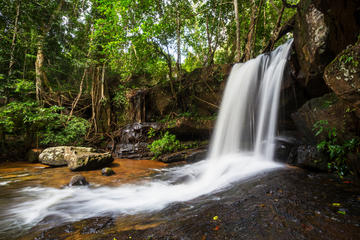
While the decaying structures and overgrown temples of Angkor Wat remain among the most popular destinations in Siem Reap, the rare collection of stone carvings along the Stung Kbal Spean River, often referred to as 'Valley of 1000 Lingas,' continues to bring art and archaeology lovers outside the city and beyond Angkor. The impressive carvings that line the 125-kilometer riverbed pay homage to the Hindu god Shiva. During the 11th and 12th centuries …
» Killing Fields of Choeung Ek
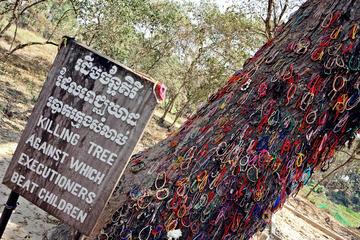
A trip to this historic spot just 15 kilometers south of Phnom Penh is not for the faint of heart. Known as The Killing fields, some one million Cambodians were murdered here by the Khmer Rouge between 1975 and 1979. Nearly 9,000 bodies have been discovered-including former prisoners from Tuol Sleng. A Buddhist stupa marks the memorial, and visitors can gaze through its clear walls at some 5,000 human skulls-all victims of the bloody regime …
» Kompong Phluk
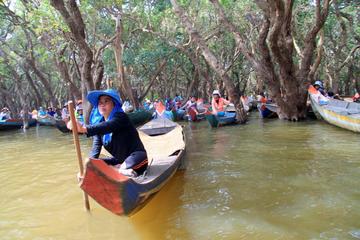
While houses on stilts can be quite common in Cambodia (you'll often see people relaxing in hammocks strung underneath the houses, homes on stilts in a lake…well, that's a bit more unusual. Kompong Phluk is a set of villages that are located on the floodplain of the Tonle Sap Lake, about 10 miles (16 km) from Siem Reap. The community, which consists of about 3,000 villagers, mostly live in stilted homes and depend on fishing and tourism for their livelihood …
» Mekong River
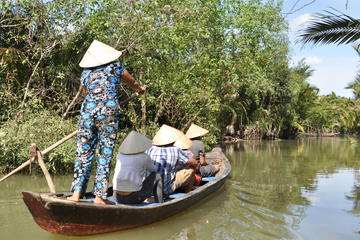
The 2,700-mile-long Mighty Mekong is the 12th-longest river in the world and the main artery of Southeast Asia. Its flowing waters are the beating pulse for a region that includes the fertile delta in Ho Chi Minh City, the scenic hills of Laos, the thick forests in Thailand and Cambodia and even the Yunnan province of China and the Tibetan Plateau. The Mekong River serves as a hub for life in Southeast Asia, and it's home to some of the region's most unique biodiversity …
» National Museum of Cambodia
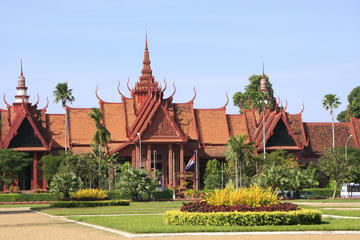
The National Museum is home to one of the largest collections of Khmer art in the world. Well-kept galleries display choice artifacts that pay homage to Hinduism and Buddhism. Even daily objects, like household utensils, and items used in religious ceremonies are on display. Works in the museum, which opened in 1920, are divided into four categories: stone, metal, wood and ceramics. Be sure to check out the bronze standing adorn Buddha …
» Old Market (Phsar Chas)
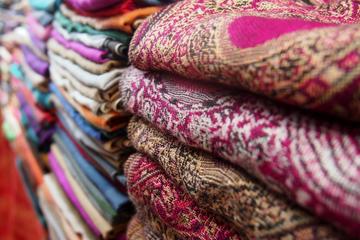
There's a reason why most businesses in Siem Reap give their addresses in relation to Psar Chas-better known as the Old Market. Its well-stocked stalls selling Buddhist treasures, hilariously misspelled t-shirts, jewelry and other souvenirs are a must-stop destination for travelers visiting this ancient city. Friendly sellers used to foreign visitors make it easy to haggle for the best deal at this market in the heart of Siem Reap …
» Phimeanakas
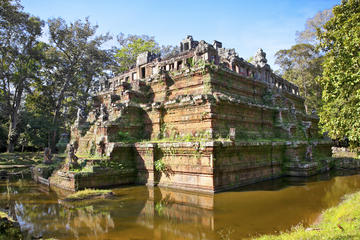
Set near the center of the Royal Enclosure in Angkor Thom, Phimeanakas served as the king's personal temple during the 10th and 11th centuries, before Jayavarman VII constructed Angkor Thom around it. Historians believe the three-tiered temple was once topped with a gold-covered tower, but very little of it remains. According to local legend, the king would visit the top of the temple each night to meet a woman with the head of a naga (a serpent deity) …
» Phnom Bakheng
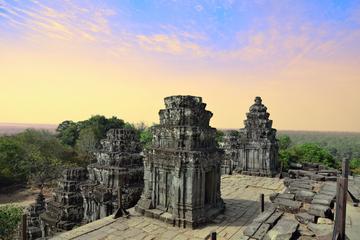
Built during the ninth century at what was the center of the royal city at the time, Phnom Bakheng (also known as the temple of Shiva) is one of the oldest temples in Angkor. The five-tiered pyramidal structure, built on top of a hill, and was originally surrounded by 108 towers, an auspicious number in many Eastern religions. While the temple ruins of Phnom Bakheng are impressive, the reason most visitors come is to watch the sunset from the top …
» Phnom Tamao Wildlife Rescue Center
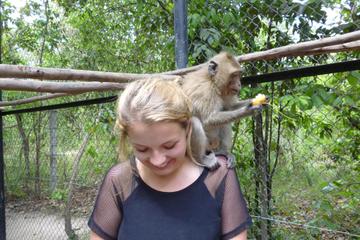
Lions and tigers and sun bears and elephants and deer and gibbons and snakes, oh my! At this sanctuary for rescued animals, guests can see a vast array of Cambodia's wildlife (which is usually very difficult to spot), ranging from the world's largest captive collections of Malayan sun bears and pileated gibbons to rare animals like greater adjutant storks and Siamese crocodiles. When possible, the center's residents are released back into the wild once they've recovered …
» Preah Khan
Preah Khan was built around the same time as Angkor Thom, and like it was conceived as a whole city, though on a smaller scale. It was erected on the site of an important military victory and its outer perimeter is guarded by 72 stone garudas (winged mythological creatures depicted throughout Southeast Asia). A stupa (a domed structure holding Buddhist relics) and numerous smaller Hindu temples indicate the spiritual mix that Preah Khan embodied …
» Pre Rup
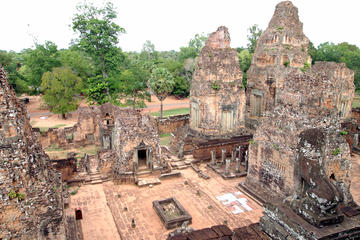
Built in 961 by King Rajendravarman II, the three-spired Shiva temple of Pre Rup resembles Angkor Wat on a smaller scale. The name of the temple translates to 'turning the body,' suggesting that it might have once served as a crematorium for Angkor's royalty. Built a few years after nearby Mebon but identical to it in architectural style, Pre Rup was made from gray sandstone, once coated in a layer of plaster that has largely worn away …
» Pub Street
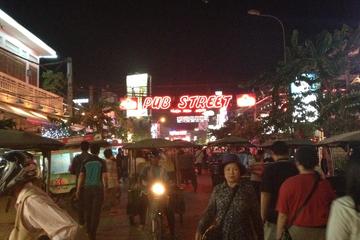
Travelers looking for cold beers and cheap food almost always find themselves in the throes of chaotic Pub Street. Local taverns, unique vendors, musicians and traditional dancers line this paved pass, giving Siem Reap's entertainment Mecca a true party vibe. Pedestrian-only streets mean it's easy to wander between stalls selling traditional crafts, ice-cold beers and spicy hot soups. Food here is as popular with locals as it is with travelers …
Page 1 • Page 2
« Home • Asia & Pacific • CAMBODIA • Destination Cambodia


